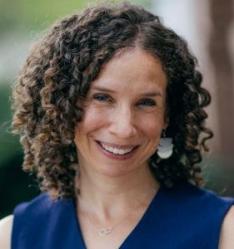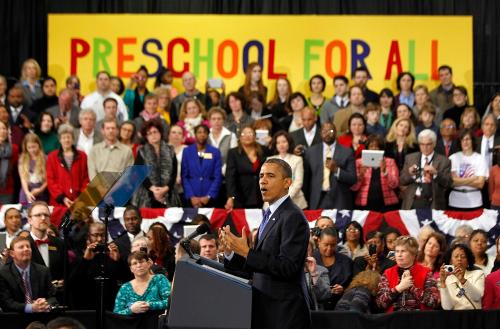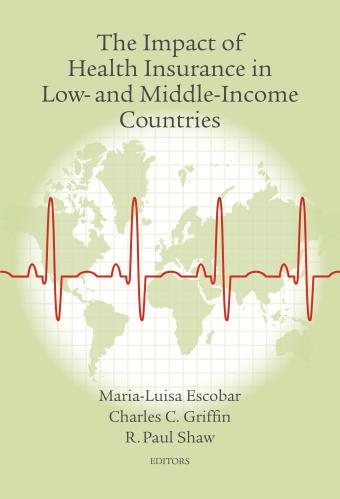Expanding access to preschool programs, as advocated in President Obama’s “Preschool for All” initiative, would have positive effects on the preschool enrollment of all 4-year olds, but if access is free regardless of income, it could lead many children to switch out of the private system and into the public program, according to a new paper presented today at the Fall 2013 Conference on the Brookings Papers on Economic Activity (BPEA). This “crowd-out” should be an important consideration as states would have to decide on the level of cost-sharing for middle-class families under the Obama plan should it pass Congress, the paper suggests.
In “The Impacts of Expanding Access to High-Quality Preschool Education,” Elizabeth Cascio of Dartmouth College and Diane Whitmore Schanzenbach of Northwestern University examine the effects of the introduction of universal preschool programs in the states of Georgia and Oklahoma in the 1990s, comparing the children and families in those states to children and families elsewhere in the country. They find stark differences in preschool enrollment patterns by family background, with children whose mothers have no more than a high school diploma being much more likely to enroll in preschool at age 4 – experiencing an 18-20 percentage-point enrollment gain, versus a 12-15 percentage-point gain in preschool enrollment rates for children whose mothers have more education. The authors also find that about half of the enrollees (4 or 5 out of every 10 participants) with more-educated mothers would have otherwise enrolled in private preschool, with this crowd-out causing costs of the program to taxpayers to increase overall as much as 19 percent.
Disadvantaged families, who gain more from the program in overall preschool participation, also show gains in overall maternal quality time spent with children – time spent reading, playing, doing art projects, and talking. The authors also find long-term academic benefits, with modest, sustained increases in the 8th grade math test scores for the lower-income children. Conversely, among higher-income children, the authors find no positive impacts of the program on student achievement. On the other hand, the families that switch to public programs do benefit from the program financially, seeing a significant reduction in their childcare spending – on the order of $3,300 to $5,600 – money that is then freed up for other purposes.
Turning to labor market impacts and use of preschool as a form of childcare, Cascio and Schanzenbach find little evidence to suggest that the Georgia and Oklahoma programs have increased a woman’s chances of working when her child is 4-years old.
The authors suggest it may be more cost-effective to design a preschool program to target those most in need to reduce the extent of crowd-out. They acknowledge, though, that targeting the program may undermine its effectiveness for lower-income children if exposure to higher-income peers in universal preschool classrooms plays an important role.
The Brookings Institution is committed to quality, independence, and impact.
We are supported by a diverse array of funders. In line with our values and policies, each Brookings publication represents the sole views of its author(s).










